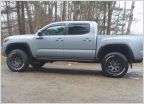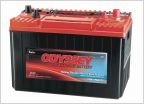-
Welcome to Tacoma World!
You are currently viewing as a guest! To get full-access, you need to register for a FREE account.
As a registered member, you’ll be able to:- Participate in all Tacoma discussion topics
- Communicate privately with other Tacoma owners from around the world
- Post your own photos in our Members Gallery
- Access all special features of the site
Bed Stiffener Alternative Solution???
Discussion in '3rd Gen. Tacomas (2016-2023)' started by tacoma_JT, Dec 4, 2020.
Page 4 of 6
Page 4 of 6


 Automatic locking tailgate
Automatic locking tailgate 2020 Tacoma OR Leveling Kit
2020 Tacoma OR Leveling Kit Bed Light.....some dumbass left it on for a few days
Bed Light.....some dumbass left it on for a few days Cheap, $10 aluminum battery hold-down
Cheap, $10 aluminum battery hold-down











































































